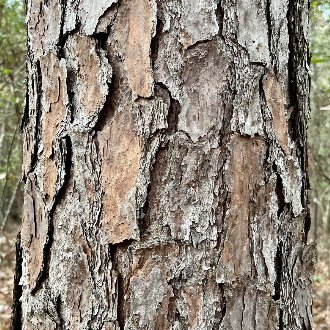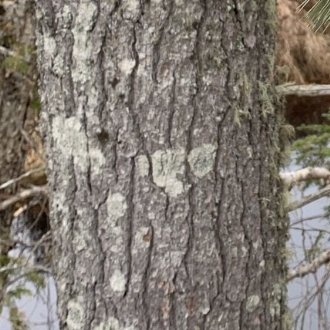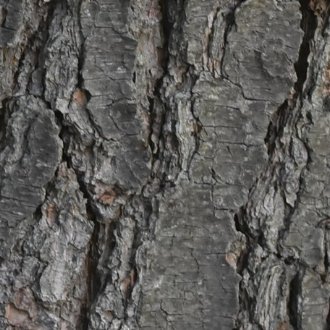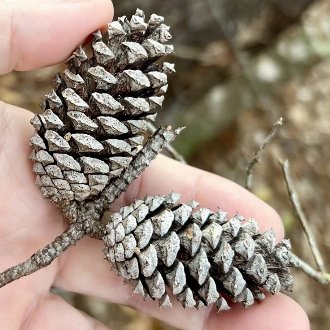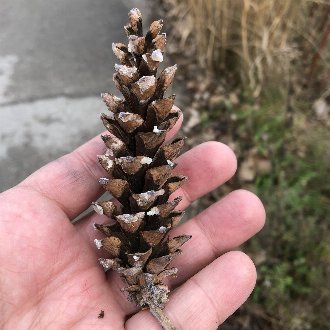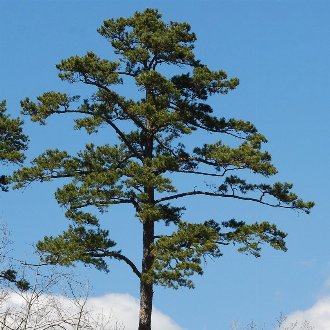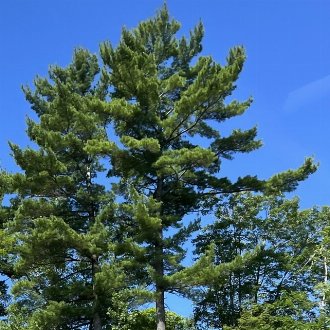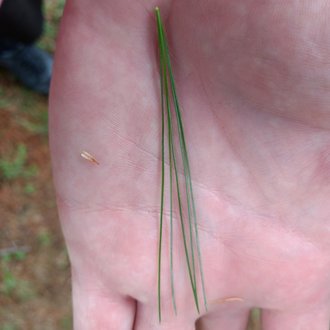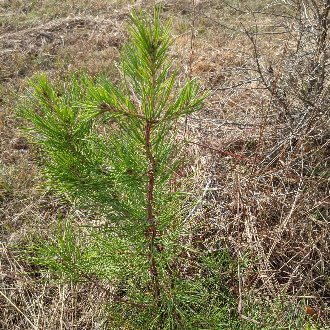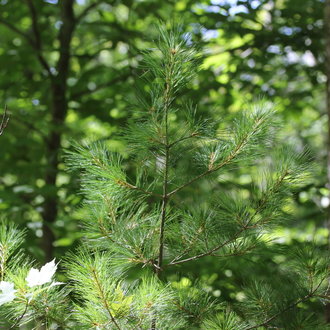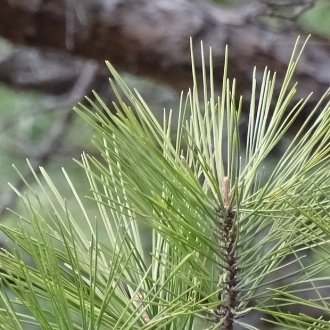Shortleaf Pine vs Eastern White Pine
These species are sometimes confused where their ranges overlap, as both tend to have more delicate-looking foliage with thin needles of similar length, and can tower over deciduous forests. They are easily distinguished by cones, bark, count of needles per bundle, and crown shape. Pinus strobus ranges much farther north, is more shade-tolerant, and in the areas of range overlap is more restricted to cool, humid sites. Pinus echinata ranges much farther south and southwest, prefers dry sites, and is more strictly limited to sites with acidic, leached soils.
Shortleaf Pine (Pinus echinata) | Eastern White Pine (Pinus strobus) |
A native pine of the southeastern US, growing as a pioneer species, preferring leached soils, more common on dry uplands but found in many conditions. | A common native pine of the northeast, Eastern White Pine is the tallest tree in the east, and more shade-tolerant than most pines. |
Bark of mature trees is more reddish, arranged in shorter vertical plates, interrupted by more horizontal cracks. Photo © Laura Clark, CC BY 4.0. | Bark of mature trees is more grayish, with long, relatively uninterrupted furrows. Photo © Charlie Hohn, CC BY 4.0. |
Bark plates have resin pockets. Bark plates lack any regular horizontally-oriented features. Photo © Laura Clark, CC BY 4.0. | Bark plates lack resin pockets. Smaller branches and relatively young bark plates have more fine-textured, straight-horizontal features such as lines or fine cracks. These features usually vanish as bark plating matures. Photo © Sienna, CC BY 4.0. |
Seed cones much shorter (4-6cm, rarely to 7cm), short and stout, ovoid-conic when open. Photo © Laura Clark, CC BY 4.0. | Seed cones much longer (8-20cm, rarely as short as 7cm) and long and narrow in shape. Photo © Andrew Sebastian, CC BY 4.0. |
Branches in crown often have a downward-opening curve, often ascending close to the trunk and flattening or even slightly descending farther from the trunk. Crown is thinner and more sparse, reflecting lower shade-tolerance. Photo © Douglas Goldman, CC BY 4.0. | Branches in crown have a more upward-curved shape, proceeding more horizontally near the trunk and often curving upward towards their tips. Crown is thicker and more lush, reflecting greater shade-tolerance. Photo © Jacob Roetscher, CC BY 4.0. |
Needles mostly 2 per bundle, sometimes 3, often with examples of both on the same tree, but never more than 3. Photo © Zihao Wang, CC BY 4.0. | Needles consistently 5 per bundle. Photo © Mark Apgar, CC BY 4.0. |
Shade-intolerant and prefers dry habitats. Seedlings and saplings usually only found in sunny, exposed settings. More likely on south- and west-facing slopes, near hilltops, and farther from water. Photo © stephen, CC BY 4.0. | Prefers moister, humid microclimates. More shade-tolerant, and especially in zone of range overlap, seedlings and saplings are most likely in partly-shaded settings. More likely on north- and east-facing slopes, in sheltered coves, and near water. Photo © Even Dankowicz, CC BY 4.0. |
Foliage of healthy trees ranges from gray-green to yellow-green, never bluish. Photo © Samantha Heller, CC BY 4.0. | Foliage of healthy trees ranges from deep green to slightly bluish, not yellowish unless trees are diseased. Photo © Mark Apgar, CC BY 4.0. |
References & External Resources
These short lists show only links helpful for ID. For a complete list of references and resources also covering other aspects of ecology, visit the links section of the full article on each plant, which is the first entry here.



